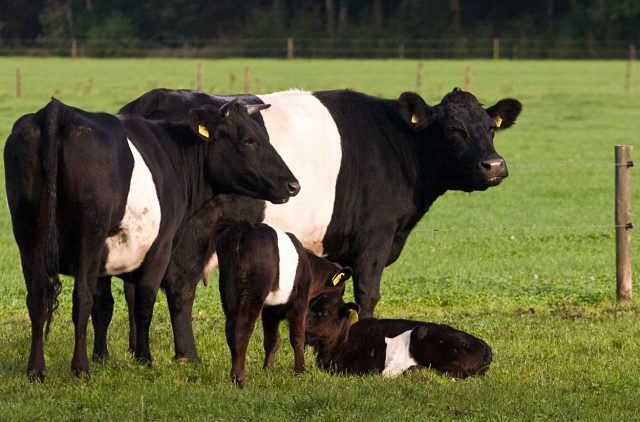Type the name of the breed you're looking for below
[wpdreams_ajaxsearchlite] Don't see the breed your're looking for? Click here and let us know!
Dutch Belted cattle
| Place of Origin | Netherlands |
| Origin | The Dutch Belted (Lakenvelder) breed traces directly to the original belted cattle which were described in Switzerland and Austria. The breed was then established in the Netherlands in the 17th century. From the records obtainable, it seems they were bred by the nobility who conceived the idea of breeding animals of all kinds to a particular colour, mainly with a band of white in the center and both ends black. The Dutch were very protective of their belted cattle and would generally not part with them. They were highly prized for their milking and fattening abilities. The breed began to flourish in Holland around 1750. (This historical account is found in Professor Raymond Becker's book, Dairy Cattle Breeds: Origin and Development.) The American Livestock Breeds Conservancy now lists Dutch Belted as on the critically rare breeds of livestock in the North America, with fewer than 200 registered cattle in the country. In 1976, after two and a half decades of cross breeding the original Lakenvelders, the remaining cattle of those herds were only 2% well-marked. Since reintroduction of pure bloodlines via semen from the U.S. in 1990, the national Lakenvelder herd is 57% well-marked. Dutch Belted have other unique characteristics which make them desirable in crossbreeding programs. Of course, due to the rarity of the pure Dutch Belted crossbreeding can only be recommended by use of Dutch Belted males or semen on common cows, not crossbreeding Dutch Belted females to males of other breeds. Such crossing has been to some extent responsible for the decline in numbers of pure Dutch Belted. |
| Purpose | The Dutch Belted cow is primarily a dairy breed. |
| Appearance | The name Lakenvelder or Lakenfield cattle derives from the word “laken” meaning a sheet or cloth, referring to the white band passing around the body. In some countries animals with this marking are known as “sheeted” cattle. This belt or sheet is of pure white hair extending from the shoulders to the hip bones and should encircle the body completely. The cattle are otherwise black (or occasionally red). |
| Horns | Small |
| Cows Average Weight | 408 - 680 kg (900 - 1500 lbs.) |
| Bulls Average Weight | 612 - 907 kg (1350 - 2000 lbs.) |
| Other Considerations | The American Livestock Breeds Conservancy lists the Dutch Belted as “critical” on the Conservation Priority list. The population in the USA is estimated at less than 300, with fewer than 1,000 worldwide. Cross-breeding in the Netherlands has resulted in dilution of original stock, and the US population of Dutch Belted cattle is now considered purer and more true to the original genotype than are the cows in the Netherlands today. Currently, a “Breeding Up” program designed to increase numbers and genetic diversity of the Dutch Belt is in place. The program breeds registered Dutch Belt bulls with grade cows. By the fifth generation, offspring are considered 96.88% pure and eligible for full registration with the DBCAA |



